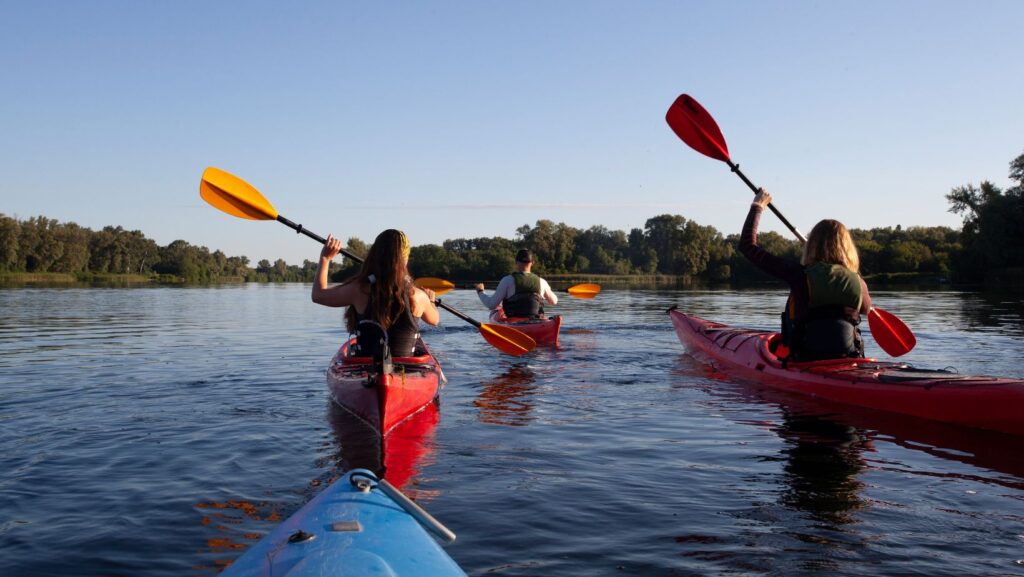Sporting Gear Kayak
Kayaking offers a thrilling escape into nature’s embrace, where adventure and tranquility coexist. Whether paddling through serene lakes or navigating challenging rapids, the right sporting gear can make all the difference. As kayaking continues to gain popularity, enthusiasts are seeking gear that enhances both safety and performance. From sleek paddles to durable life vests, today’s kayaking gear is designed to meet the diverse needs of paddlers. High-quality equipment not only boosts confidence on the water but also ensures a comfortable and enjoyable experience. With advancements in technology, modern gear is lighter, more efficient, and tailored to specific kayaking styles.
Sporting gear kayaks cater to a range of activities, enhancing both recreational and competitive experiences. They vary widely in design, materials, and features, each tailored to specific environments and user preferences.
- Types of Kayaks: Recreational kayaks, designed for calm waters, offer stability and ease of use. Touring kayaks, built for long distances, feature increased storage and tracking capabilities. Whitewater kayaks, crafted for river rapids, emphasize maneuverability and durability.
- Materials and Construction: Polyethylene, fiberglass, and composite materials are common in kayak construction. Polyethylene offers affordability and durability, while fiberglass and composites provide a lightweight and agile experience, essential for advanced paddlers.
- Key Features: Key features like adjustable seating, footrests, and storage compartments enhance comfort and utility. Advanced options may include rudder systems for better control and GPS mounts for navigation.
- Technological Advancements: Recent innovations focus on enhancing the kayaking experience. Lightweight materials, ergonomic designs, and advanced water-resistant coatings contribute to increased performance and safety.
Sporting gear kayaks address the demands of both casual and serious paddlers. With an informed choice, they bring confidence and excitement, following the unique rhythms of nature on every journey.
Types Of Sporting Gear Kayaks
Sporting gear kayaks cater to various water adventures, offering designs tailored to specific activities. Selecting the right type enhances enjoyment and performance. Recreational kayaks suit calm waters like lakes and slow-moving rivers. Their stability and user-friendly design target beginners and casual paddlers. Typically 9 to 12 feet long, they provide easy maneuverability. Wider hulls offer stability, making them ideal for short, leisurely outings. Single-layer polyethylene construction keeps them affordable while ensuring durability.
Touring kayaks excel in longer expeditions on open waters, including large lakes and oceans. They measure 12 to 18 feet in length, offering speed and efficiency over distance. Sleeker profiles and narrower hulls improve tracking and reduce drag. Advanced materials like fiberglass or composites enhance performance, although they increase cost. Features include storage hatches and bulkheads for gear, and skegs or rudders facilitate control in currents or winds.
Fishing kayaks streamline angling by incorporating specialized designs for stability and storage. Wider than most kayaks, they ensure steadiness while casting or reeling. Models with built-in rod holders and tackle storage optimize convenience. Sit-on-top designs are popular; they offer easy access and more seating options. Durable materials like polyethylene withstand rugged conditions, ensuring long-term use.
Key Features To Consider
Choosing the right sporting gear kayak involves evaluating several features to ensure optimal performance and satisfaction. Consider the following key aspects when making a decision. Kayak material significantly influences durability and performance. Polyethylene is common due to its affordability and resistance to impact. Fiberglass offers a lighter, more rigid option, enhancing speed but requiring careful handling. Composite materials provide high performance with a blend of lightness and strength yet demand a higher investment.
Size and weight impact maneuverability and transport ease. Shorter kayaks offer better maneuverability for quick turns in rapids, while longer ones excel in speed and tracking on open water. Lightweight models facilitate transport but may compromise on durability compared to heavier counterparts.
Stability ensures confidence and control on the water. A wide hull enhances stability, making it ideal for beginners or calm waters, whereas a narrower hull offers better control and speed for more experienced kayakers. Advanced designs include features like skegs or rudders to improve tracking in challenging conditions.

